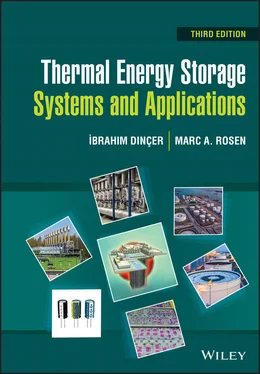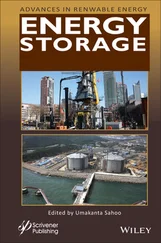1 1.35 What is the Kelvin–Planck statement of the second law of thermodynamics?
2 1.36 What is the Clausius statement of the second law of thermodynamics?
3 1.37 Define the terms energy, exergy, entropy, and enthalpy.
4 1.38 What is the second‐law efficiency? How does it differ from the first‐law efficiency?
5 1.39 What is the relationship between entropy generation and irreversibility?
6 1.40 What are the two common causes of irreversibility?
7 1.41 During an irreversible process, do the parameters mass, energy, entropy, and exergy decrease or increase or remain conserved?
8 1.42 How does an exergy analysis help the goal of more efficient energy‐resource use? What are the advantages of using exergy analysis?
General Aspects of Fluid Flow
1 1.43 What is the physical meaning of the Reynolds number? What makes the flow laminar and what makes it turbulent?
2 1.44 What is viscosity? How does viscosity change with temperature for gases and for liquids?
General Aspects of Heat Transfer
1 1.45 What is the difference between heat conduction and heat convection?
2 1.46 Define the terms forced convection and natural convection, and explain the difference between them.
3 1.47 Define the term heat generation. Give some examples.
4 1.48 What are the modes of heat transfer? Explain the physical mechanism of each mode.
5 1.49 How much energy does it take to convert 10.0 kg of ice at 0°C to water at 25°C?
6 1.50 A 20 cm thick wall of a house made of brick (k = 0.72 W/m°C) is subjected to inside air at 22°C with a convection heat transfer coefficient of 15 W/m2 °C. The temperature of the inner surface of the wall is 18°C and the outside air temperature is −1°C. Determine the temperature of the outer surface of the wall and the heat transfer coefficient at the outer surface.
7 1.51 A satellite is subjected to solar energy at a rate of 300 W/m2. The absorptivity of the satellite surface is 0.75 and its emissivity is 0.60. Determine the equilibrium temperature of the satellite.
8 1.52 An 80‐cm‐diameter spherical tank made of steel contains liquefied natural gas (LNG) at −160°C. The tank is insulated with a 4 cm thickness of insulation (k = 0.015 W/m°C). The tank is subjected to ambient air at 18°C with a convection heat transfer coefficient of 20 W/m2 °C. How long will it take for the temperature of the LNG to decrease to −150°C. Neglect the thermal resistance of the steel tank. The density and the specific heat of LNG are 425 kg/m3 and 3.475 kJ/kg°C, respectively.
Конец ознакомительного фрагмента.
Текст предоставлен ООО «ЛитРес».
Прочитайте эту книгу целиком, купив полную легальную версию на ЛитРес.
Безопасно оплатить книгу можно банковской картой Visa, MasterCard, Maestro, со счета мобильного телефона, с платежного терминала, в салоне МТС или Связной, через PayPal, WebMoney, Яндекс.Деньги, QIWI Кошелек, бонусными картами или другим удобным Вам способом.












